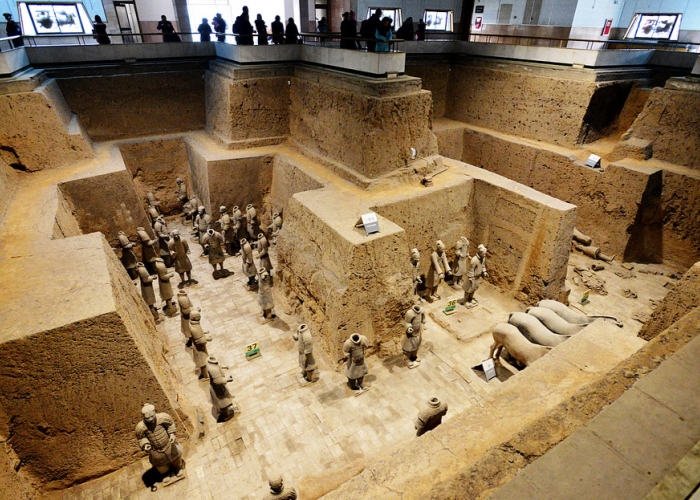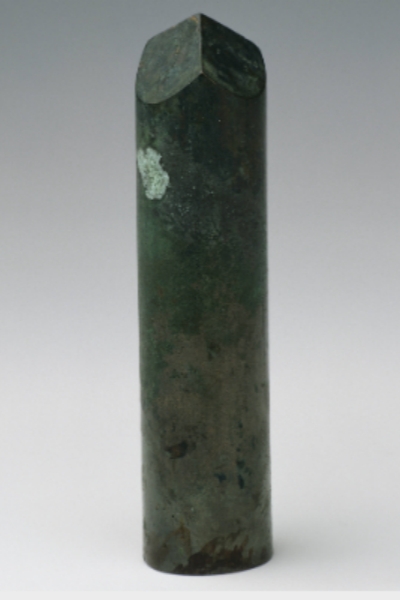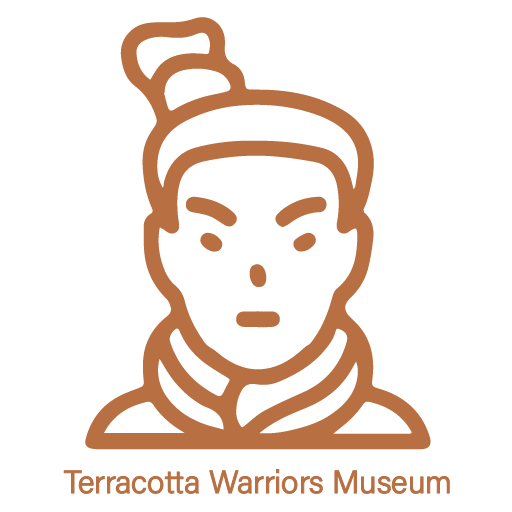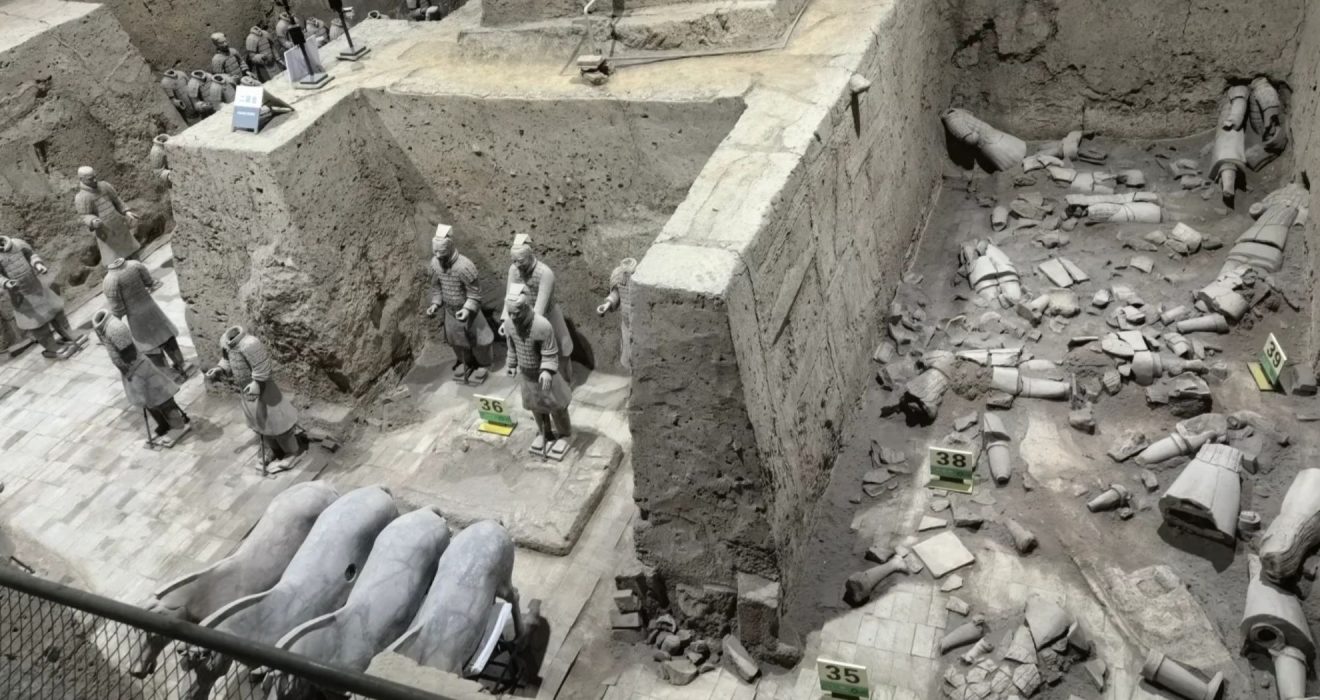Terracotta Warriors Museum Pit 3
On May 11, 1976, archaeologists discovered Terracotta Warriors Pit 3, located 25 meters north of Pit 1 and opposite Pit 2. This concave-shaped pit, the smallest pit at approximately 520 square meters, consists of north and south wing rooms and a chariot and horse room. A total of 68 terracotta warriors and horses were unearthed, along with a chariot drawn by four horses.

Unique Layout of Terracotta Army Pit 3
Terracotta Army Pit 3 features a unique layout, including a chariot drawn by four horses and accompanied by four terracotta warriors, with four military officials positioned behind. The southern wing contains 42 warrior figures arranged in a room shaped like the character “且”, while the northern wing holds 22 figures in two columns.
Terracotta Army Pit 3 is the only one of the three pits that has not been damaged by fire. As a result, it contains more remnants of colorful paintings on the terracotta figures, and the colors are notably brighter.

Pit 3 – The Command Center of the Terracotta Army
Pit 3 of the Terracotta Army is believed to be the command headquarters for Pits 1 and 2, representing the earliest known military command center in world archaeology. The layout features warriors arranged face-to-face, resembling a guard unit, and includes a uniquely painted command chariot, indicating its high rank.
Arrangement of Terracotta Warriors
In terracotta warriors pit 3, the terracotta figures are arranged in pairs, facing each other along the perimeter walls. This setup contrasts with the combat formations seen in Pits 1 and 2.
Weaponry in Terracotta Warriors Pit 3
In Pit 3, only one type of weapon was found: the bronze shu (青铜殳), which lacks a blade and was used for ceremonial purposes during the Qin Dynasty. This highlights the unique nature of Pit 3, distinguishing it from Pits 1 and 2, where warriors were equipped with long-range crossbows and close-combat weapons like spears, ge (halberd-like weapons), yue (battle-axes), and swords.

Unearthed Relics in Pit 3
In addition to the terracotta warriors, horses, and bronze artifacts, Pit 3 yielded a broken deer antler and a collection of decayed animal bones in the north wing. Some animal bones found in the south wing showed signs of burning, suggesting that this area may have been used for divination and sacrificial ceremonies.

Importance of Terracotta Army Pit 3
Terracotta Army Pit 3 is crucial for studying various aspects of the Qin Dynasty, including the structure of ancient command headquarters, divination practices, pre-battle ceremonies, and the appointment of generals. It offers valuable insights into the military system, culture, art, and society of the time.
Information of Pit 1 of Terracotta Army
Information of Pit 2 of Terracotta Army
Information of Bronze Chariots and Horses of Terracotta Army


